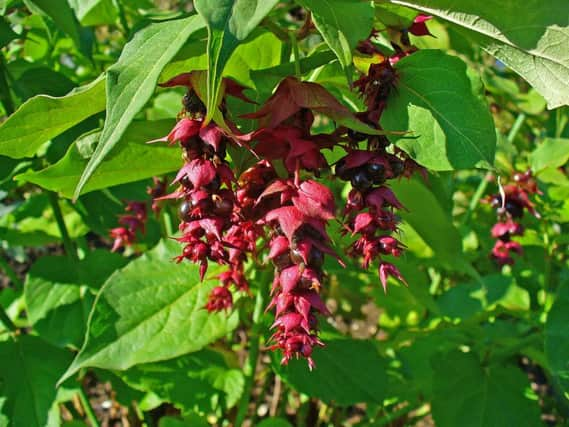BRIAN KIDD: Your letters and jobs for the weekend


Q : My leycesteria is being attacked by caterpillars. How can I get rid of them? MD, Gosport.
A: They are sawfly caterpillars and will defoliate the tree quickly. Give the shrub lots of sharp shakes and tread on the caterpillars which fall out. You can spray with a product called PY. Next year spray with PY in mid-June or as soon as you see the caterpillars.
Advertisement
Hide AdAdvertisement
Hide AdQ: I was pleased with my autumn-sown peas and would like to plant more, but in the past they’ve been covered with mildew. Is there a variety which will not get mildew? HC, Copnor.
A: Ambassador is mildew-resistant but must be sown this week. Later sowings are prone to mildew but if you spray the plants with a litre of blue top milk with a tablespoon of ordinary soda this will sort the problem. Spray when the peas can be felt in the pods.
Q: We have just moved to Cowplain and this very pretty flower is growing in the lawn. We would like to keep it and I am mowing around it. Can you tell me the name and when can I dig it out and put into a newly planned border? Sue, Cowplain.
A: What a lovely letter and I have sent your kind gift to The Rocky Appeal at QA Hospital. This delightful plant is a Peruvian lily alstroemeria. It can be dug out in late October and planted in your new border. I hope you will be happy at Cowplain, I loved living there a few years ago.
Advertisement
Hide AdAdvertisement
Hide AdQ: I am trying to grow cucumbers in growing bags but when watering the water pours over the edge of the bag. Any ideas? GC, Fareham.
A: Use a large plastic flower pot and cut off the base with old scissors. Push the base very firmly so that at least two inches are pushed into the compost and water the pot very slowly and very often. Use Maxicrop Complete for the best crop every other time you water the plants using the weak dilution which you will see on the plastic container. Cucumbers adore heat and humidity. Keep the windows closed.
JOBS FOR THE WEEKEND
•Watch out for leaf curling, particularly on plums, peaches and cherries. Underneath the leaves there will be hundreds of aphids. Simply cut off the infected tips and put the prunings into a bucket, then the pests won’t escape. After this, spray the trees with liquid soap flakes. Use one cap-top in two gallons of water. Spray in the evening after the sun has gone off the trees.
•Transplant seedlings of sweet William in rows 18in apart. If you forgot to sow them they can be sown now.
Advertisement
Hide AdAdvertisement
Hide Ad•Tie in stems on dahlias. On large varieties, three canes may be better than one. Dahlia foliage gets heavy after rain.
•Keep taking off dead flowers on all flowering plants to ensure the blooms keep forming, particularly on annuals.
•Bend new shoots on climbing and rambling roses so they form arch-like shapes. This will ensure blooms will be borne on the sides of the shoots, not just on the tops.
•Feed sweet peas with Maxicrop All Purpose feed and remove every seed pod. This will keep them blooming for longer.
Advertisement
Hide AdAdvertisement
Hide Ad•Thin apples and plums so none of the fruits touch each other. Spray afterwards with Copper Mixture to PREVENT brown rot on plums.
•Sow seeds of winter turnips and large rooted radish for winter soups. Dust the seedlings with ant killer dust to prevent flea beetle damage. (Tiny holes in leaves with crispy brown edges on the leaves).
•Cut back all side shoots on cherries, nectarines and peaches by half the length of the rapidly growing shoots. This will encourage flower buds on the parts you leave behind, these flower buds form next year’s fruits.
•Take cuttings of all types of Daphne, side shoots three inches long are ideal. Plant in 75 per cent sharp sand with 25 per cent peat or peat substitute, keep them in the shade but they will take many weeks to root.
Got a question for Brian? Click here and fire away.